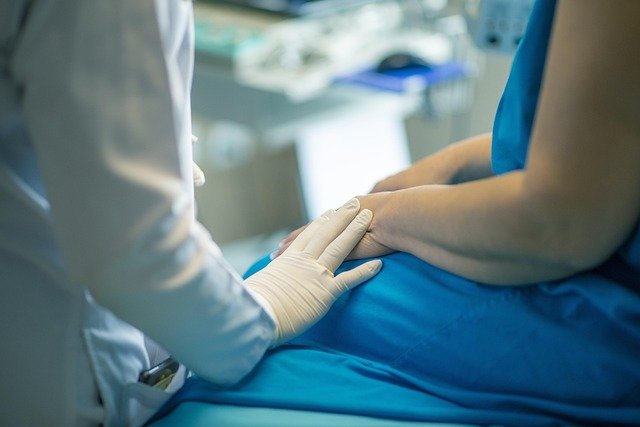Breast Implants: Types, Procedures, and Key Considerations in the US
Breast implants are a common surgical option chosen for cosmetic or reconstructive purposes. This article explores the types of implants available, the procedures involved, potential risks, and what individuals should consider when making informed healthcare decisions.

Types, Procedures, and Key Considerations in the US
Breast augmentation surgery has evolved significantly over the decades, offering women various options to achieve their desired aesthetic goals. The procedure involves placing implants to increase breast size, restore volume lost after pregnancy or weight loss, or create better symmetry between breasts. Modern techniques and improved implant materials have made this surgery safer and more predictable than ever before.
What Are the Different Breast Implant Types Available?
Two primary types of breast implants are approved by the FDA for use in the United States: saline and silicone gel implants. Saline implants consist of a silicone shell filled with sterile salt water during surgery, allowing for smaller incisions and adjustable fill volumes. These implants are approved for women 18 years and older and tend to feel firmer than natural breast tissue.
Silicone gel implants contain a cohesive silicone gel that closely mimics the feel of natural breast tissue. These implants are pre-filled and require slightly larger incisions for placement. They are approved for women 22 years and older for cosmetic augmentation. Both types come in various shapes, including round and teardrop (anatomical) profiles, with different projection levels to suit individual body types and aesthetic preferences.
Understanding Breast Implant Procedures and Surgical Techniques
Breast implant procedures typically involve several key decisions regarding incision placement, implant positioning, and surgical approach. Common incision locations include inframammary (under the breast fold), periareolar (around the nipple), and transaxillary (through the armpit). Each approach has distinct advantages and considerations regarding scarring, sensation, and surgical access.
Implant placement can be either subglandular (above the chest muscle) or submuscular (partially or completely under the chest muscle). Submuscular placement often provides more natural-looking results, especially in women with minimal natural breast tissue, while subglandular placement may involve shorter recovery times. The surgical procedure typically takes one to two hours under general anesthesia, with most patients returning home the same day.
Exploring Cosmetic Surgery Options and Alternatives
Beyond traditional breast implants, several cosmetic surgery options exist for breast enhancement. Fat transfer breast augmentation uses liposuction to harvest fat from other body areas, which is then purified and injected into the breasts. This technique provides modest size increases with natural-feeling results but may require multiple sessions to achieve desired outcomes.
Breast lift procedures, or mastopexy, can be combined with implants to address both volume and positioning concerns. Some women may benefit from a lift alone if their primary concern is sagging rather than size. Non-surgical alternatives, such as external breast enhancement systems or injectable fillers, exist but typically provide temporary results and are not widely recommended by plastic surgeons.
Important Breast Implant Considerations and Risk Factors
Several critical factors require careful consideration before pursuing breast implant surgery. Potential complications include capsular contracture, implant rupture, changes in nipple or breast sensation, and the need for future revision surgeries. Recent concerns about breast implant-associated anaplastic large cell lymphoma (BIA-ALCL), a rare type of lymphoma, have led to increased monitoring and patient education requirements.
Lifestyle factors also play important roles in decision-making. Breast implants may interfere with mammography screening, requiring specialized techniques for cancer detection. Future pregnancy and breastfeeding capabilities are generally preserved, though some women may experience changes in milk production. The longevity of implants varies, with many requiring replacement or revision within 10-15 years.
| Procedure Type | Average Cost Range | Additional Considerations |
|---|---|---|
| Saline Implants | $3,000 - $4,000 | Lower initial cost, potential for visible rippling |
| Silicone Implants | $4,000 - $5,000 | More natural feel, requires MRI monitoring |
| Fat Transfer | $4,000 - $8,000 | Limited size increase, multiple sessions may be needed |
| Revision Surgery | $3,000 - $10,000 | Varies based on complexity and complications |
Prices, rates, or cost estimates mentioned in this article are based on the latest available information but may change over time. Independent research is advised before making financial decisions.
Choosing the right plastic surgeon is crucial for achieving safe, satisfactory results. Board certification by the American Board of Plastic Surgery ensures proper training and expertise in cosmetic procedures. During consultations, surgeons should discuss realistic expectations, review before-and-after photos, and explain all aspects of the procedure, including recovery timelines and potential complications.
The decision to undergo breast implant surgery is highly personal and should be made after thorough research and consultation with qualified medical professionals. Understanding the various types, procedures, and considerations involved helps ensure informed decision-making and realistic expectations for outcomes. Regular follow-up care and monitoring remain essential components of long-term implant health and satisfaction.
This article is for informational purposes only and should not be considered medical advice. Please consult a qualified healthcare professional for personalized guidance and treatment.




